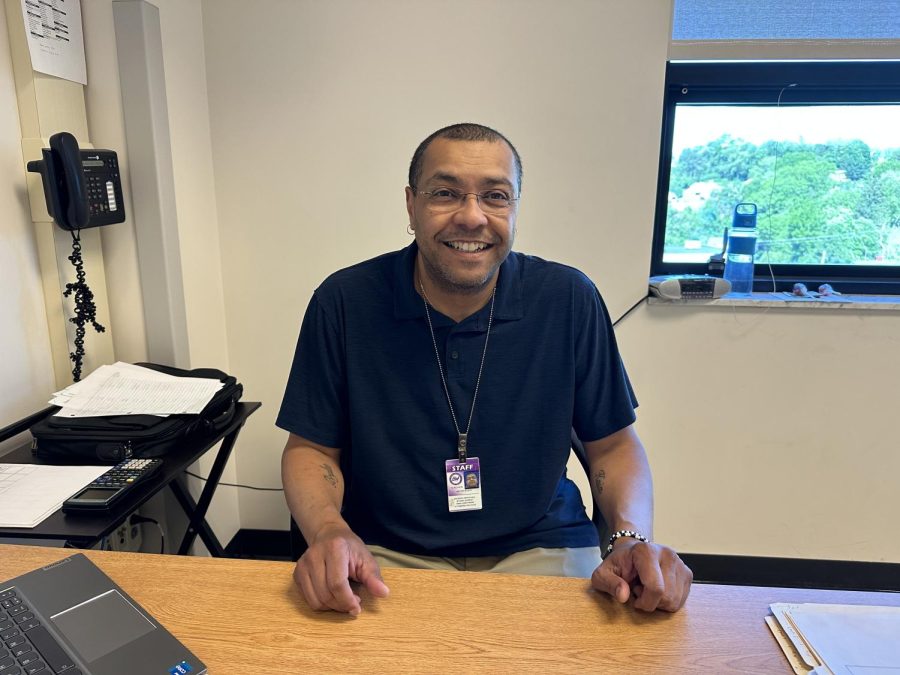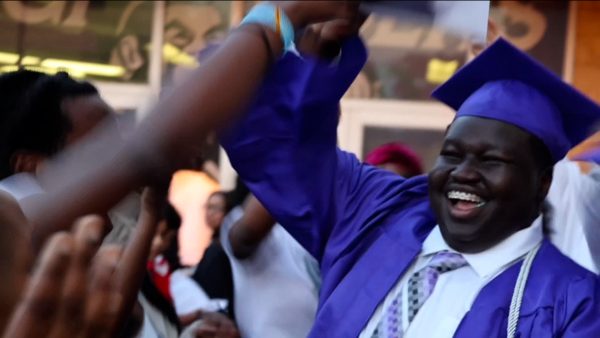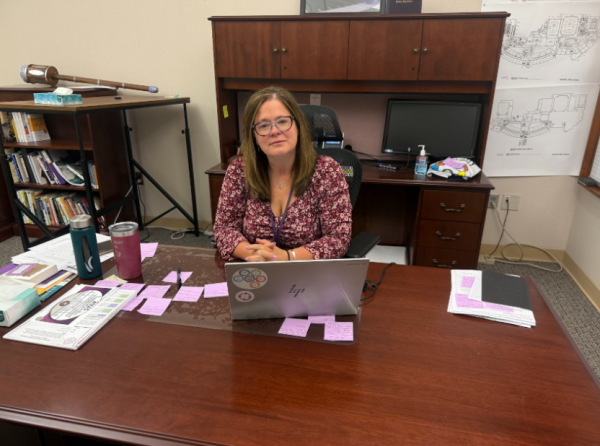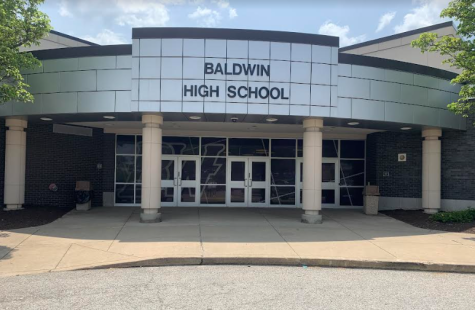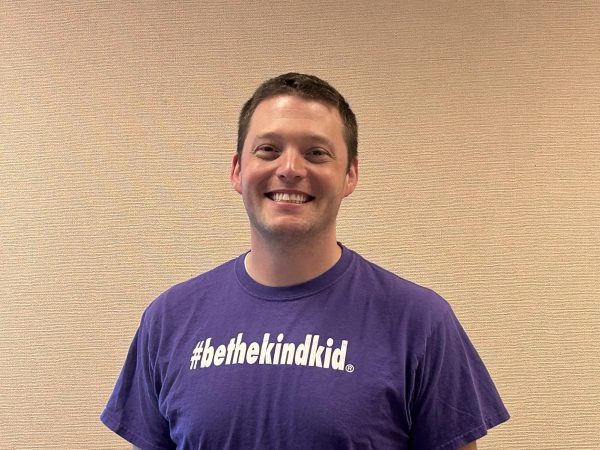Building a staff that looks like the students remains elusive
Bryan Black is the only Black teacher on the Baldwin staff.
As a Black student at a high school with only one Black teacher, senior Mwango Kasuba says he sometimes feels the need to code switch – a term that refers to a person changing their dialect or tone depending on the situation.
“A lot of times I feel like I have to put on an act or code switch,” Kasuba said. “If there were more Black teachers around in the district, I would have more people to relate with and fully express myself to.”
When interviewed about their experiences at Baldwin, Black students generally talked about positive experiences. But the school’s lack of teachers of color was a topic that came up frequently.
Senior Brooklyn Williams said that having more Black teachers would help students of color feel a greater sense of belonging.
“I think if we had more people of color as teachers or even guidance counselors to look up to, there would be a better connection,” Williams said.
Senior Devaylin Diggs agreed.
“I would feel even more connected to my teachers if there were more who looked like me,” Diggs said.
Senior Michael Phiri recalled an incident from middle school, where some students disrespected the only Black teacher he had.
“They would make fun of her accent constantly. It seems to me that anyone with an accent can face problems,” he said.
Math teacher Bryan Black wishes he was not the only Black teacher at the high school.
“I have some issues with the lack of representation,” Black said. “Hopefully this (lack of representation) goes away soon.”
Supt. Dr. Randal Lutz acknowledged that the district must do more to find people of color to serve as staff members.
“We want teachers that look like our kids, and we are not very good at that,” he said. “We can say, ‘We interviewed everyone who applied,’ but that’s a pretty passive response. How can we be a little bit more active in recruiting?”
Lutz pointed out that with a significant number of students who are Asian or members of other ethnic groups, Baldwin-Whitehall needs to be truly inclusive in its hiring.
“If our goal is to have the adults in the school district look more like the student body, it’s a bigger conversation than just Black staff members,” Lutz said. “Our 1,000 Asian kids need teachers who look like them too.”
In March, the district announced it would be partnering with Carlow University and the Power of One program to increase staff diversity.
The program, made possible by a state department of education grant, provides “seamless and supportive pathways toward teacher certification for Black and Indigenous People of Color (BIPOC).”
Tammi McMillian, a Carlow administrator talks about how the program works.
“We can provide funding for tuition, books, student teaching stipend, mentorship, and coaching,” she said.
“A couple of the educational directors have really been looking at what types of programs we can provide and offer to help build our own ranks,” Lutz said. “It’s so hard with teaching certifications and other types of work within schools. It can be very challenging to find folks who want to do this, and so we have had a long-standing cooperation with Carlow, just with student teaching placements.”
Lutz wants the new Power of One program to give Baldwin the opportunity to find more BIPOC teachers.
“Through this program, with tuition reimbursement, some other support, even just guaranteeing interviews, we wanted to partner in this way. We are hoping that it produces some positive results,” he said.
It is important to note that Baldwin is far from alone in facing this issue.
According to the Pennsylvania research group Research for Action, 1,400 schools in the state do not have a single Black teacher. Meanwhile, the group said, there are now 1,200 fewer Black teachers in Philadelphia-area schools than there were 20 years ago.
This same study said that increased representation among teachers leads to more student success and enrollment in higher-level classes.
“Research shows that exposure to teachers of color has a positive impact on students of all races, and particularly students of color,” the study said. “Despite these positive effects, only 4% of Pennsylvania’s teachers are people of color.”
Principal Shaun Tomaszewski agrees that representation is essential.
“I think representation is super important, and we try to intentionally recruit diverse faculty,” he said.
One issue, Tomaszewski said, relates to teachers’ low wages.
“I think we, as a society, devalue and underpay teachers so much,” he said. That creates a smaller pool of people interested in being a teacher, which also means there are fewer people of color applying, he said.
Tomaszewski said prejudices can be broken down by getting to know people from different cultural and racial groups.
“I think with exposure comes awareness, and with awareness comes an opportunity to confront your own biases,” he said.
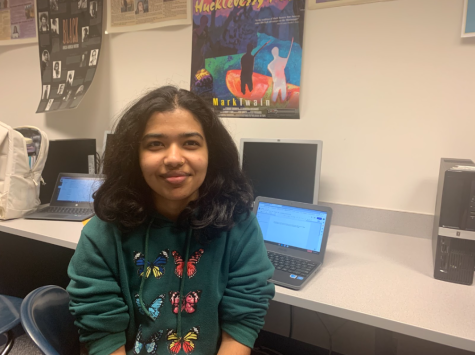
Staff Writer Dibya Ghimirey is a senior and a second-year member of the Purbalite. When she isn’t scrolling through countless TikToks, she can be found...
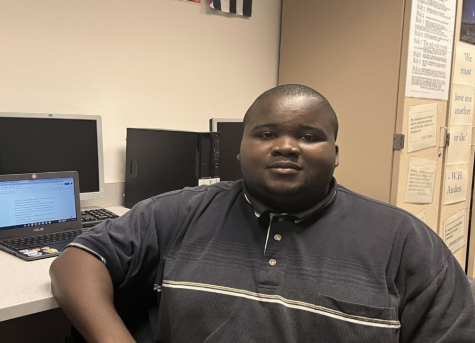
Senior Staff Writer Kalonga Mwenda, otherwise known as Kalo, is a second-year member of The Purbalite. He can be found listening to Stevie Wonder and watching...
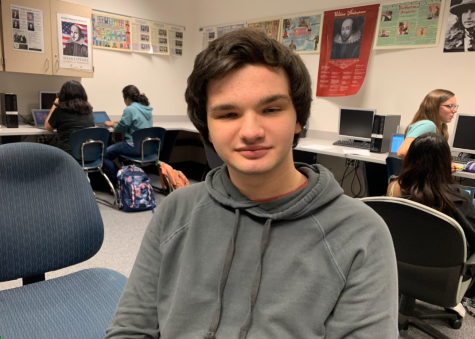
News Editor Sam Tobiczyk is a senior and a third-year member of the Purbalite. In their free time, they can be found listening to indie music or watching...


